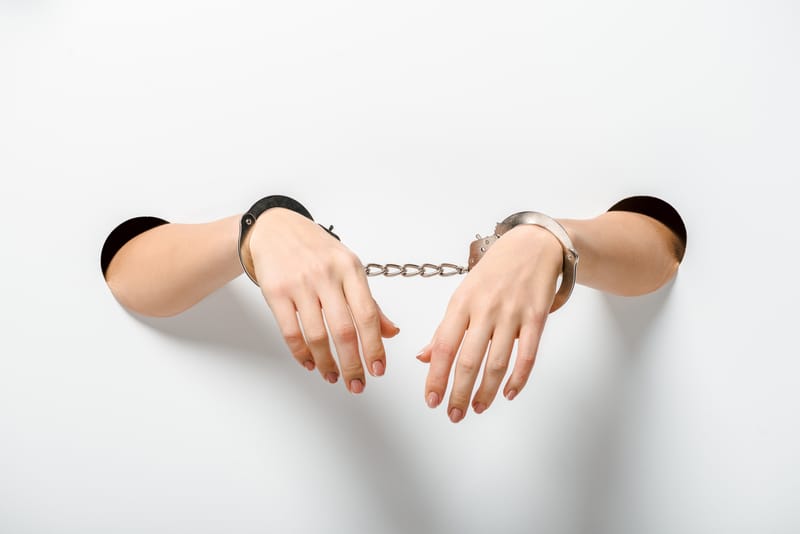Facial expressions are one of the unique abilities that help us connect to others without speaking. A simple smile or a wink can go a long way, so when you start to lose your ability to make facial expressions due to facial paralysis, it can be very stressful. I remember how uncomfortable I was before I discovered these surprisingly effective acupressure points for facial paralysis.
Facial paralysis can be caused by any number of things, but some of the major contributors are peripheral facial palsies, like Bell’s palsy. When I began my journey with facial paralysis, it was unexpected and strenuous. I wanted to strengthen my facial muscles in a way that was natural and would not cause side effects like facial spasms or facial pain. After a few rounds of acupuncture points for facial paralysis, I knew I had found my perfect answer, and I am happy to share this simple solution with others!
How To Treat Facial Paralysis Naturally?

In many cases, facial paralysis is a naturally occurring condition, and like most natural conditions, it is also subject to natural solutions. Acupuncture has been a form of treatment for thousands of years, and its effective nature has kept it relevant in current medicine.
While a number of studies have shown the effective nature of activating specific acupressure points for facial paralysis, studies have also explained the deeper nature of how this treatment works. In relevance to the theory of traditional Chinese medicine, an acupuncture session provides sufficient treatment because it relieves areas of clogged energy and improves blood circulation. This then allows the body to recover more effectively.
Can Acupuncture Help With Facial Paralysis?
While acupuncture can help with facial paralysis, there is no proof that it is a guaranteed cure, but don’t let this deter you. While acupressure is not guaranteed to 100% fix facial paralysis, studies have shown that it is capable of providing 60% to 70% improvement in overall facial muscle function. Some studies have even suggested that acupressure, when applied properly, can benefit mental function alongside facial paralysis in Bell’s Palsy patients.
With acupressure, there are little to no dangerous side effects, so it is worth trying! Here are my favorite acupressure points for facial paralysis.
Acupoint: ST-6 (Other Names: Stomach-6/Jia Che/Jaw Bone)
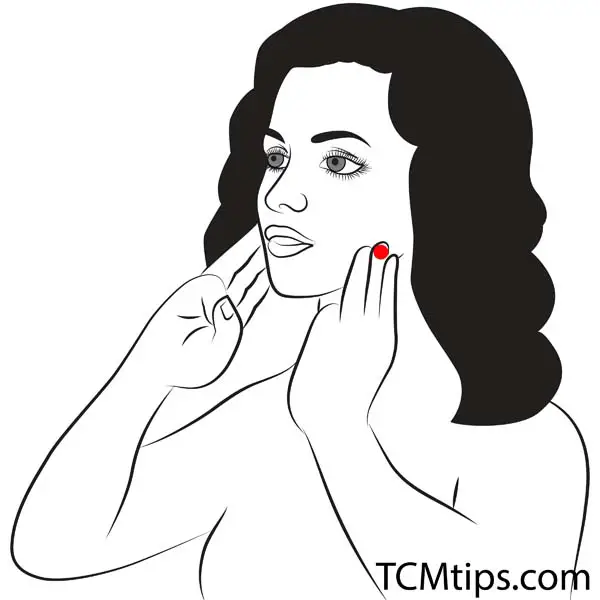
This is commonly referred to as the jawbone point due to its location. The point is commonly used to reduce swelling and improve blood circulation in the face, which aids in pain relief and the regeneration of tissues as one works to regain facial motor skills. It is a pretty popular point on the face acupressure points chart due to its many practical uses. This point makes our list of acupressure points for facial paralysis because the muscle it helps is often weakened from facial paralysis, resulting in a decreased ability to properly chew and digest food. This can lead to indigestion, nutritional deficiencies, and a number of other gastrointestinal complications, so it is important to address this.
To locate this point, start by clenching your jaw and feeling the area for a muscle. This muscle should appear below the ear and one finger’s width above the jawbone. Once you feel the muscle, you can relax your jaw and apply gentle pressure to the area to stimulate the point.
Acupoint: ST-2 (Other Names: Stomach-2/Si Bai/Four Whites)
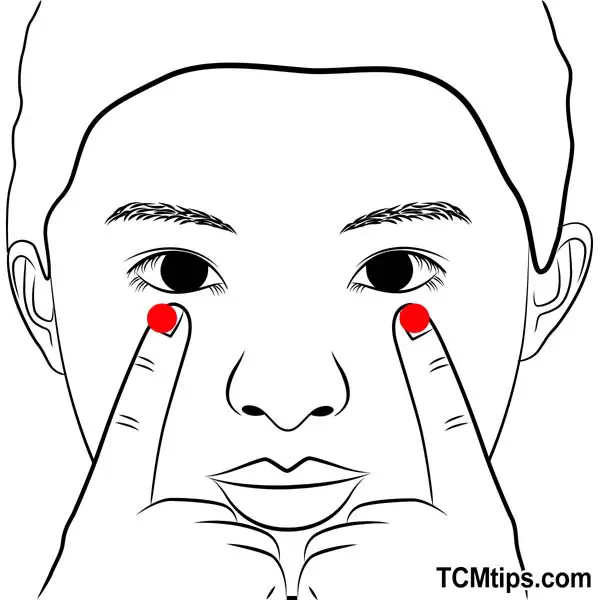
ST-2 is a point on the stomach meridian that is mirrored under both eyes. This point is used to relieve pain in the face, decrease facial spasms and strengthen muscles in the associated area. This point is also a popular facial acupressure point for wrinkles, so you can regain facial muscle control and look younger!
Start to locate this point by looking directly forward, preferably into a mirror. ST-2 lies 1.5 to 2 centimeters beneath each eye and is in line with the pupils. This area of the eye is very sensitive, the skin is thin, and it is mostly bone, so be sure to use caution when you activate this point.
Acupoint: TE-17 (Other Names: Triple Energizer-17/Yi Feng/Wind Screen)
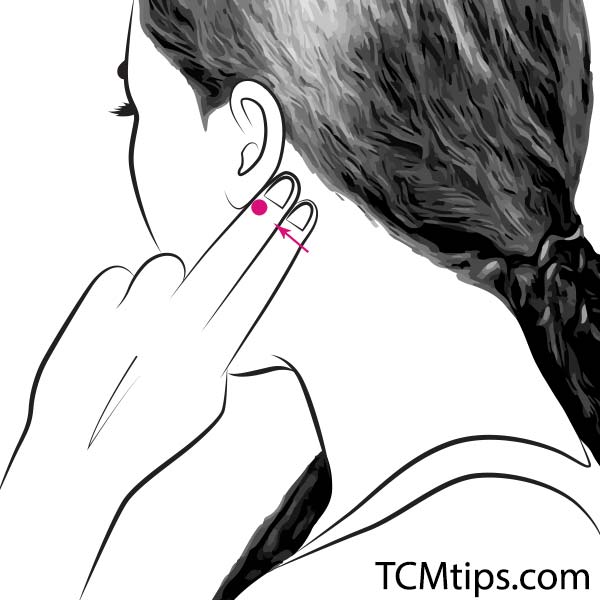
The neck and areas close to the spine are teaming with nerves, giving them a strong influence over many areas of the body, including the face. In particular, this point is on the path of the facial nerve, allowing for direct stimulation of facial muscles. TE-17 is part of the triple energizer channel, and it is commonly listed under acupressure points for hiccups due to its influence over many aspects of the nervous system.
This pressure point is relatively easy to identify since it can be felt better than it is seen. The TE-17 point lies behind the ear lobe. It is approximately two finger widths behind each ear, and you will know that you have found it when you feel an obvious depression past the skull behind the ear. Gently apply pressure to this soft fleshy area to activate the point.
Acupoint: Bl-2 (Other Names: Urinary Bladder-2/Zan Zhu/Gathered Bamboo)
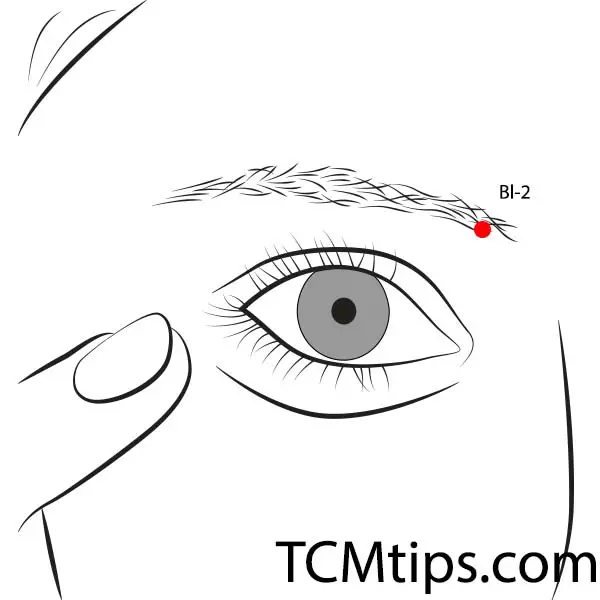
This point is commonly listed as a priority for acupressure points for eyes, likely due to its ease of location and its physical impacts. Bl-2 has been known to help treat issues with eyesight, relieve pain in the area, and even help with some intestinal matters. However, it has made this list due to its ability to stimulate and strengthen muscles around the eyes that are normally weakened by facial paralysis.
Locating this point is as easy as finding the inner corner of your eyebrow and adding gentle pressure. Take caution when activating this point so you don’t slip and hit your eye or damage the sensitive skin covering it.
Acupoint: EM-5 (Other Names: Tai Yang)
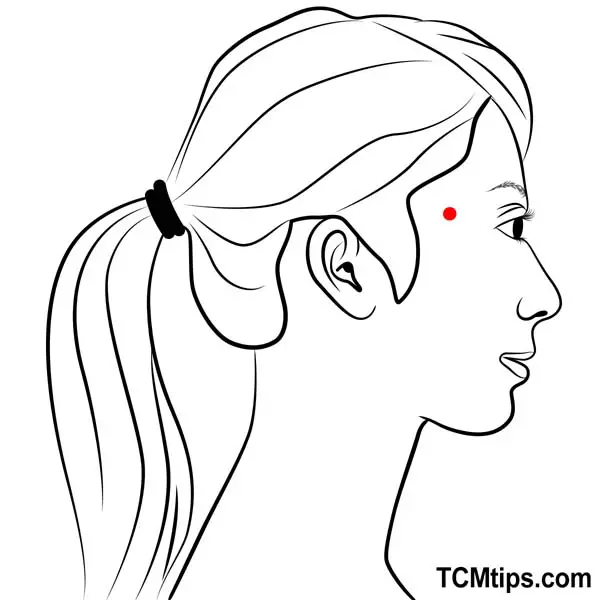
Due to its ability to decrease swelling or redness around the eyes, EM-5, or taiyang, is commonly listed under acupressure points for a facelift. While that is a great use of this point, for the sake of facial paralysis, we will activate this point to benefit from its pain relief in the face and its ability to clear stagnant heat. The activation of this point, as well as other acupuncture points, also allows for the relaxation of muscles that may be tense and pushing on nerves. Once this pressure is released, the nerves can continue their normal functions.
Look for taiyang near the temples. The point is slightly above the outer corner of the eye and about one finger width from the brow bone. You will feel a slight depression when you reach it, and you should activate it with gentle pressure.
Acupoint: ST-4 (Other Names: Stomach-4/Di Cang/Earth Granary)
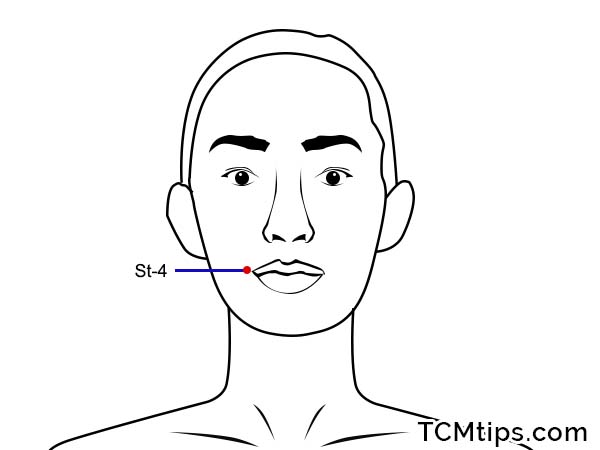
This stomach channel point is well known on face acupressure points charts due to its many uses. The point can regulate internal functions of the mouth like salvation, but it can also reduce muscle spasms and pain in the area. This can help you rebuild strength around the mouth to improve functions like smiling and talking.
On both sides of your mouth, about half a centimeter out from its corners, is where you will find the ST-4 point. Since your teeth lay beneath this skin and muscle, be sure to apply pressure with caution, as too much pressure could bruise the skin.

Try our Anti-Aging Gua Sha Tool designed to bring out your skin’s natural glow.
Best Gua Sha Product- Anti-Aging: The tool is designed to target 11 specific aging signs such as wrinkles and sagging skin. By following the 7-step routine, users can improve skin firmness and reduce fine lines naturally.
- Enhances Skincare Routine: It works effectively with serums and lotions, boosting absorption and efficacy of skincare products.
- Visible Skin Improvement: Users can expect a smoother complexion, reduced puffiness, and a more youthful appearance.
 P. Sze
P. Sze 